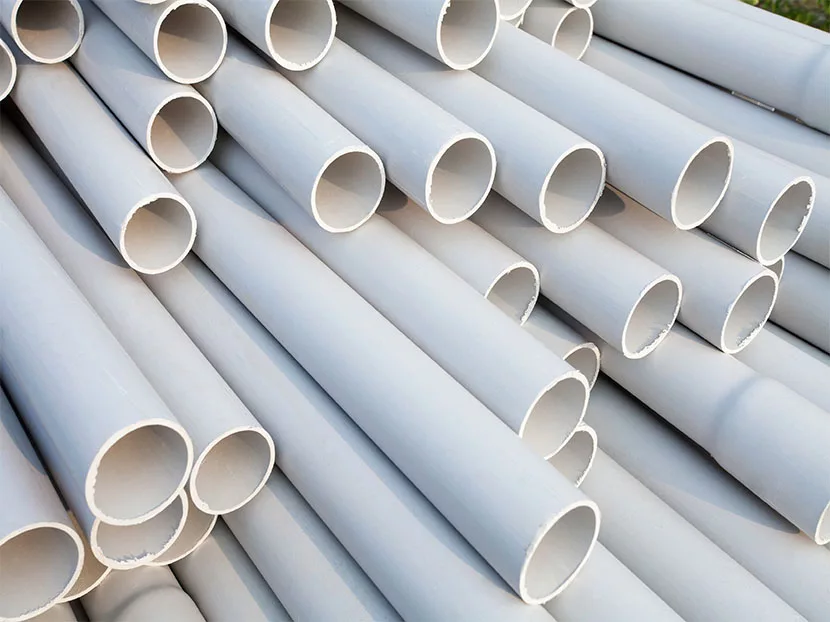(EDITOR'S NOTE:) This is a joint response from Lance MacNevin of the Plastics Pipe Institute and Michael Cudahy of the Plastic Pipe and Fittings Association to the article “UA, Firefighters Union Question Use of Plastic Pipe in Construction” which was published on the PHCPPros website on March 31, 2019
At first, it felt like we entered a time warp and had been transported back to 1975! Then, the reality seeped in: The authors of that article were attempting to assign blame to plastic pipe, behind the wall, in commercial construction for an increase in cancer rates, and they suggested archaic code limitations on plastic plumbing products!
There is sufficient and real enough concern about cancer incidence among firefighters that legislation signed in July 2018 requires the Center for Disease Control to set up a registry of fire fighters to track links between workplace exposures and cancer. NIOSH will take the lead in establishing the registry. The plastic pipe industry certainly supports such efforts because data is needed to establish the real causes of firefighter cancer.
No one wants increasing cancer rates among first responders, our nation’s heroes, or anyone else, so we should work together, rather than point fingers. It’s also a good idea to deal with facts and reality. Consequently, we are pleased to address the issue in this forum, among professional contractors who work with piping products every day and understand how standards, code conformance, and proper installation are ultimately important for building safety
Many of you know (or even remember) that when plastic pipe first came into the market in the 50s and 60s, these same allegations were pushed by anti-plastics special interests. Building Codes have evolved over the last half century and contain specific requirements to protect both occupants of these structures and first responders from the rapid spread of fire. These requirements include specific fire ratings for certain walls and floor/ceiling assemblies as well as penetrations of these fire rated assemblies.
There are many materials, both natural and manmade, that emit combustion products that are dangerous to occupants in burning rooms, including firefighters. In buildings, pipe materials are protected behind walls or contained within floor/ceiling assemblies and many of these assemblies are even fire-rated. But vast amounts of combustible materials including furniture, carpet, flooring, cabinet materials like wood, MDF, books and paper materials, electronics, and many more items are not protected, and are present in much larger quantities. Wood-frame construction also includes wooden floors, walls, ceilings, doors, roofs, and more, including materials such as OSB and glued laminated timber. To put things into perspective, plastic pipe materials likely represent less than 0.1 percent of the weight of all the building materials and contents.
As a further safety benefit, plastic piping systems are joined without the use of a flame, which is an important and often overlooked benefit for both construction-worker safety and the safety of firefighters. There have been numerous buildings that accidentally caught fire during construction due to a plumber’s or welder’s torch, putting construction workers and first responders at risk.
We would also like to note the assertion in the article that, “A recent analysis of plastic pipe…, identified more than 150 leachable substances and many of them unregulated.” This one is really a shot in the dark.
Contractors can only utilize water pipe that is third-party certified as safe for use in potable water systems against the requirements of NSF/ANSI/CSA Standard 61,”Drinking Water System Components – Health Effects” and is marked accordingly by the third-party certifier. It’s a code requirement.
When you install certified water pipe (metal and plastic), you are being assured that ALL possible extractants have been reviewed by a third party. There are chemicals that don’t have specific government-initiated regulations, but for plumbing codes that require compliance with Standard 61, there’s no such thing as an unregulated substance. NSF Standard 61 requires full risk assessments according to U.S. EPA guidelines for any and all extractants.
Firefighters, workers, occupants, and visitors should be protected from unseen hazards. Plastic pipe properly installed is not the problem. Let’s work collectively to keep every firefighter and tradesman safe.
The Plastics Pipe Institute is a non-profit trade association which began in 1950 to represent manufacturers of plastic piping systems used in all segments of the pipe industry; its Building and Construction Division focuses on pressure pipes. The Plastic Pipe and Fittings Association is also a trade association having four plus decades experience focusing on plastic pipe and fittings covered by construction codes. Its primary objective is the removal of unnecessary regulatory roadblocks.




